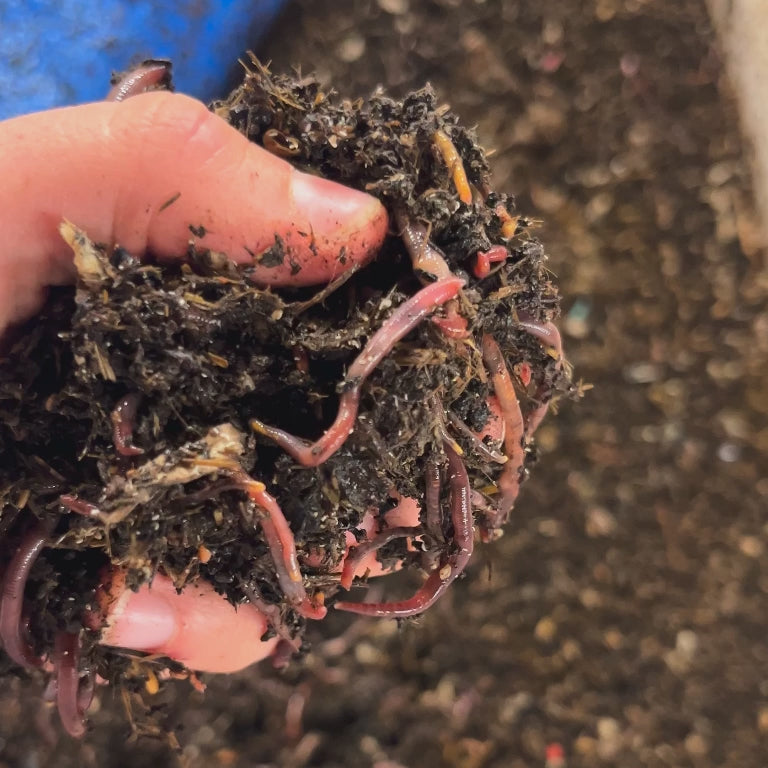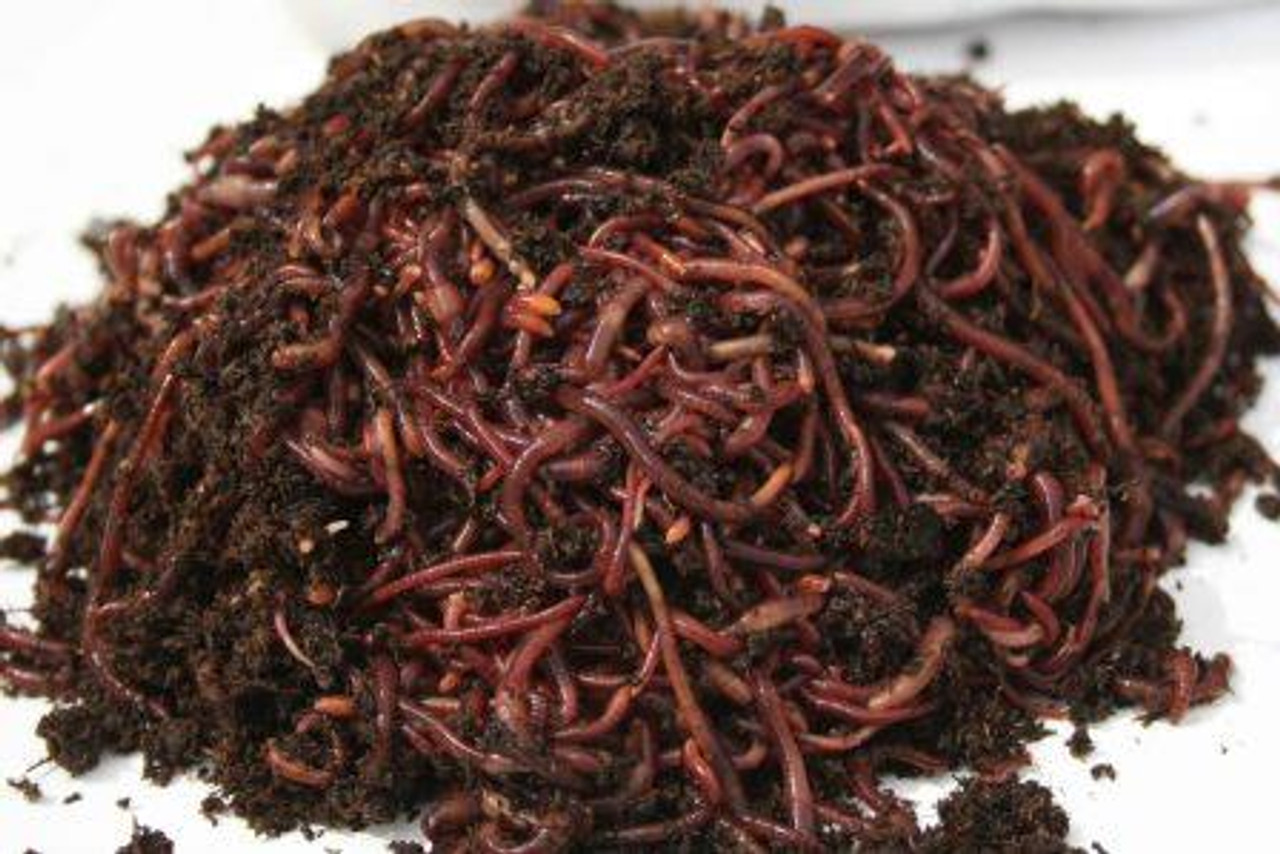Utilizing the Power of Red Wiggler Composting: A Thorough Appearance at the Environmental and Agricultural Perks of This All-natural Waste Decrease Technique
The technique of red wiggler composting stands for a compelling intersection of ecological stewardship and farming innovation, supplying a sustainable remedy to the growing challenges of waste management and soil deterioration. Through the natural procedure of vermicomposting, organic waste is changed into an important resource that not just enhances soil however also adds to a substantial decrease in garbage dump contributions and greenhouse gas discharges. As we explore the complex advantages of this technique, we discover just how it can reshape farming techniques and promote environmental awareness, triggering a closer examination of its potential effect on our neighborhoods and communities.
What Are Red Wiggler Worms?
Red wiggler worms, medically called Eisenia fetida, are a species of earthworm specifically adapted for composting and organic waste malfunction. These worms flourish in the nutrient-rich setting of breaking down raw material, making them perfect for vermicomposting systems. Expanding to a size of roughly 3 to four inches, red wigglers are defined by their reddish-brown coloration and unique banding patterns along their bodies.
Unlike various other earthworm varieties, red wigglers prefer to occupy the upper layers of dirt and natural debris, where oxygen degrees are higher and food sources are bountiful. Their physiological adaptations enable them to refine organic products successfully; they have a well-developed digestion system that enables them to transform waste right into nutrient-rich spreadings, typically referred to as "black gold" in horticulture and farming contexts.
Eisenia fetida plays an essential duty in the ecological community by assisting in the decay process, boosting dirt framework, and promoting microbial task. Offered their one-of-a-kind qualities and ecological importance, red wiggler worms have ended up being a central component in lasting waste monitoring practices and organic horticulture initiatives, contributing considerably to environmental health and wellness.
Advantages for Soil Wellness
The inclusion of red wiggler worms in composting systems uses substantial advantages for soil health. These worms play a critical duty in the decay procedure, breaking down natural matter into nutrient-rich vermicompost. This all-natural plant food enhances dirt framework, aeration, and water retention, adding to a more favorable environment for plant growth.
Vermicompost is rich in essential nutrients such as nitrogen, potassium, and phosphorus, which are vital for plant development (Red Wiggler Composting). The existence of beneficial microbes in vermicompost further advertises dirt health by improving nutrition accessibility and reducing soil-borne pathogens. This vibrant interaction fosters a robust dirt ecological community that sustains lasting agricultural practices
In addition, red wigglers promote the formation of humus, a stable raw material that improves dirt fertility and strength. This boosted natural content not only boosts soil appearance however additionally enhances its ability to withdraw carbon, alleviating climate modification impacts.
Including red wiggler composting right into farming systems can, as a result, cause much healthier dirts, greater crop returns, and enhanced sustainability. Consequently, accepting this natural waste reduction method can yield profound advantages for both the setting and farming performance.
Effect on Waste Reduction
Incorporating red wiggler worms right into composting systems substantially reduces waste, transforming natural products that would or else add to land fills right into important garden compost. This method, understood as vermicomposting, successfully processes kitchen area scraps, yard waste, and other naturally degradable products, causing a considerable decline in the volume of waste sent to land fills. According to the Environmental Security Firm, natural waste comprises a considerable section of land fill contents, producing hazardous greenhouse gases as it breaks down anaerobically.
By utilizing red wigglers, a very reliable composting representative, businesses and families can divert a considerable amount of organic waste from these land fills. Each extra pound of red wigglers can take in and process about half an extra pound of organic waste daily, leading to an exceptional decrease in total waste generation.
Moreover, the application of vermicomposting supports local waste management initiatives and advertises a circular economy, where waste is transformed right into a resource. As communities progressively embrace this technique, the collective effect on waste reduction ends up being evident, cultivating an extra lasting setting and motivating liable waste monitoring techniques. Accepting red wiggler composting not only reduces waste issues but likewise enhances community recognition about sustainable visit this website living.
Enhancing Agricultural Practices
Using red wiggler worms in agricultural methods can considerably boost dirt health and crop productivity. These worms play a vital role in the composting process, breaking down natural matter right into nutrient-rich vermicompost. This natural plant food improves soil framework, water, and oygenation retention, which are vital for robust plant development.
Moreover, the castings produced by red wigglers are rich in crucial nutrients, such as nitrogen, phosphorus, and potassium, advertising healthier crops with higher yields. The microbial activity boosted by these worms also adds to a successful dirt ecological community, boosting biodiversity and resilience against diseases and pests.

In addition, making use of vermicompost can boost dirt pH levels, making nutrients more obtainable to plants. Red Wiggler Composting. Consequently, farmers can grow much healthier crops while all at once adding to soil preservation efforts, eventually creating a much more sustainable agricultural future
Beginning With Composting
The main ingredient in red wiggler composting is organic waste, which can include cooking area scraps, yard waste, and paper products. This equilibrium fosters go to my site an optimum environment for red wigglers, which are the essential microorganisms in this composting approach.
Selecting an ideal composting system is similarly vital. Worm containers can be designed for outdoor or interior use, and they should give ample water drainage and oygenation. It is suggested to start with a handful of worms-- around one pound of red wigglers for each one pound of waste generated weekly.

Conclusion

The technique of red wiggler composting stands for a compelling crossway of ecological stewardship and agricultural advancement, offering a sustainable remedy to the expanding obstacles of waste administration and soil degradation.Moreover, the application of vermicomposting supports neighborhood waste monitoring efforts and advertises a round economic climate, wherein waste is transformed right into a source. As communities significantly embrace this technique, the collective impact on waste reduction ends up being obvious, cultivating an extra lasting environment and encouraging liable waste administration practices. The key active ingredient in red wiggler composting is organic waste, which can include cooking area scraps, lawn waste, and paper products.In recap, red wiggler composting offers a lasting solution for organic waste management, producing nutrient-rich vermicompost that dramatically enhances soil wellness.